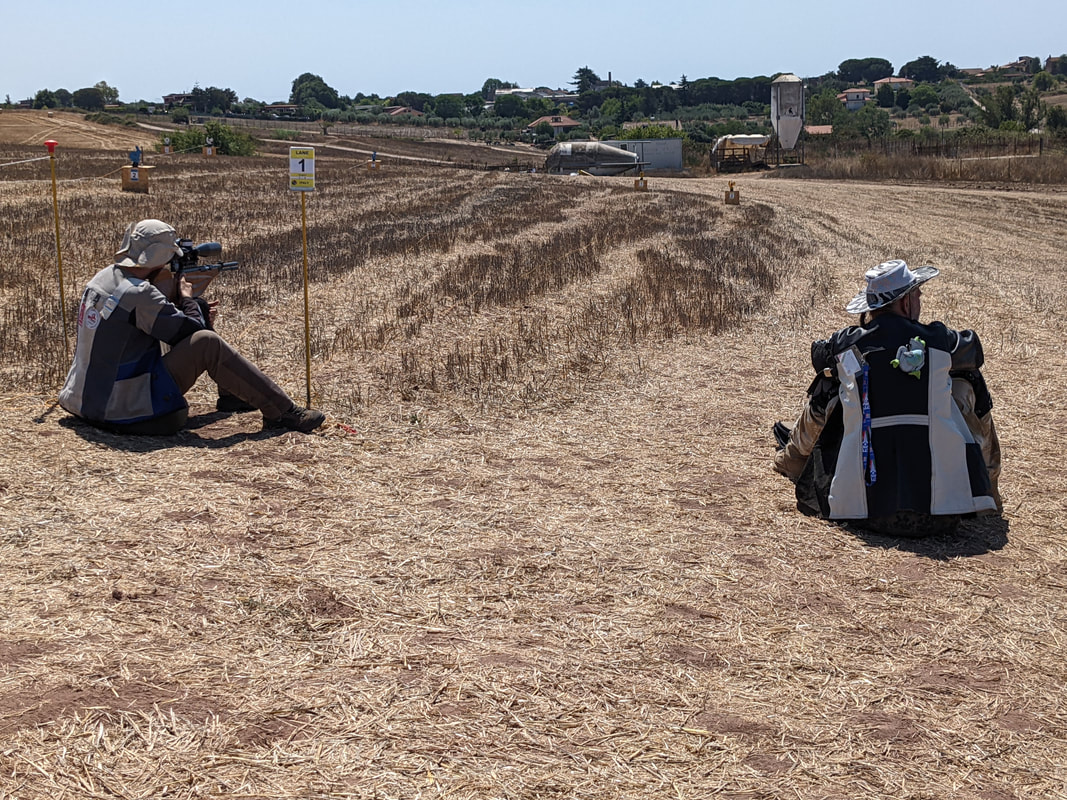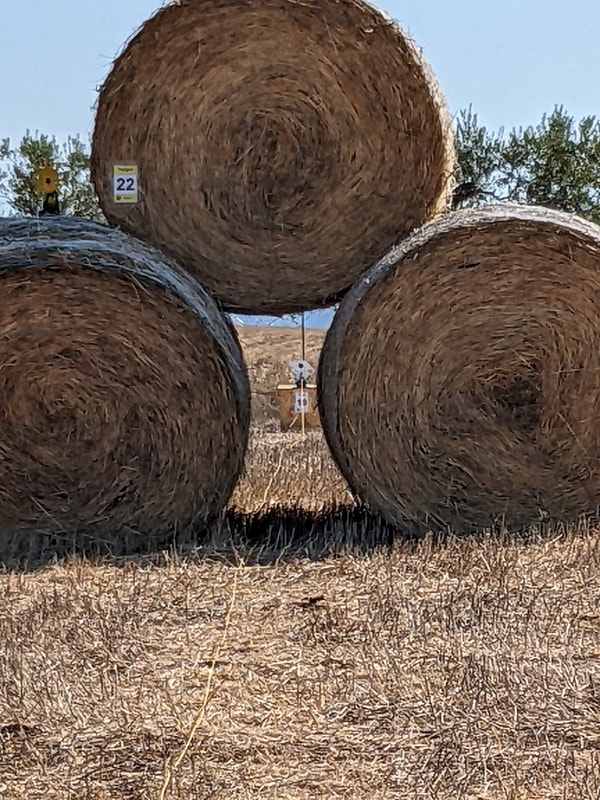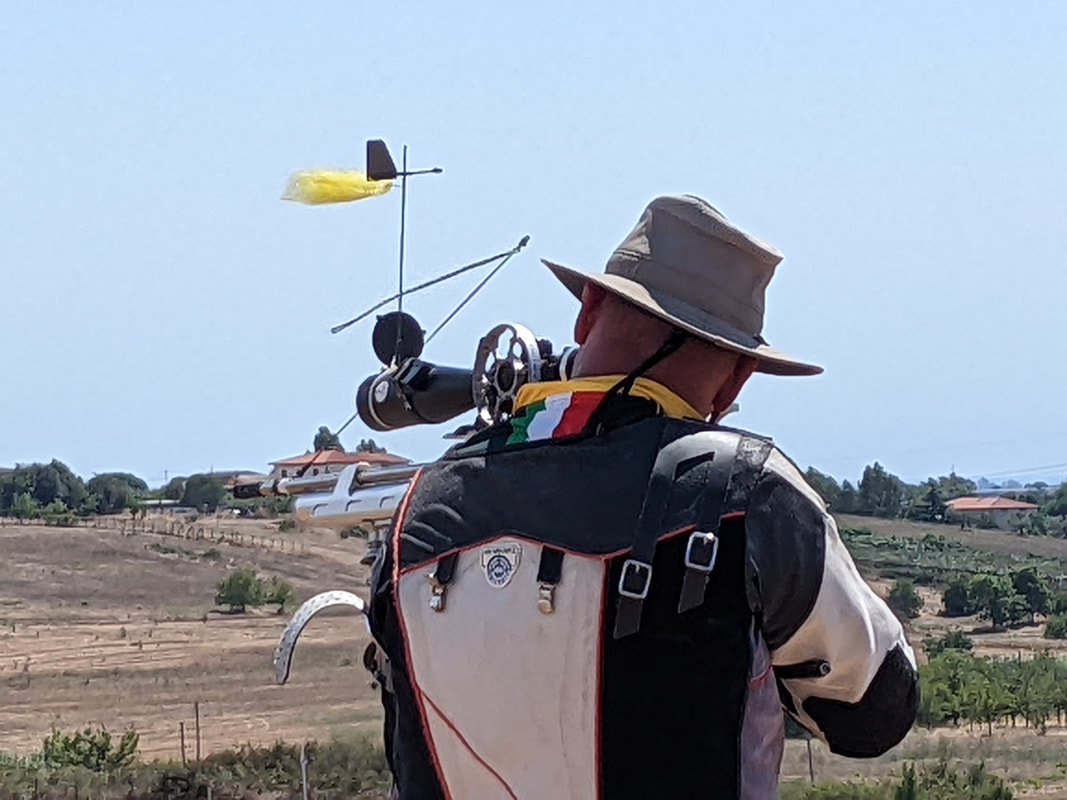Or "Resilience"
Range was about 40 minutes away from the "Villa Tuscolana", and it was somewhat hard to navigate the small roads that made the most direct route, so we found out how to trick the navigation to take us along the main highways, in the end, it took the same time, and it was much safer.
Italians think they all drive like "Emerson Fittipaldi" / F1 drivers, and between the cars, the buses, and the scooters, small roads require a lot of concentration and dexterity in driving.
No reason to get to the venue all frazzled up, better to take the longer, but more peaceful and safer, route.
Day "Zero"
This was source of much discomfort for some shooters, but those of us that had been to New Zealand were not fazed too much.
So, we went for a light lunch and returned to the range.
After getting to the range, we were told that the rest of the day was cancelled and that we would re-convene the next day.
I was happy that we DID have an extra day planned for contingencies, and this was a contingency.
Organizing a WFTC's is a LOT of REALLY HARD WORK. And more and more, the "social" aspect has become the predominant task.
Personally, I find it contrary to common sense, but I am not fighting reality. I am just very happy that we could have a WFTC's AT ALL!
People, let's see the reality: we're back from a pandemic that has strung the world to the limit of endurance on all aspects. Supply chains are still not recovered, cost of shipping and freight is still through the roof. Situation in Eastern Europe is not helping either. And the Italians made a huge effort to put on the best shoot they could.
Problems emerged and they were faced. Perhaps not to everyone's liking, but after all the difficulties, we WERE together, we WERE shooting, and solutions were in sight.
It also has to be said that the organizers received some poor advise.
Someone told them to buy kite string, and that is what they bought. Whoever provided the "spec" forgot to mention either a "# lbs Test" number for the kite string, or a material and thickness.
Also, they WERE told to NOT use new targets, but to use targets that had been TESTED under competition conditions. Well, receiving a bunch of targets in a single shipment just prior to the match is not the ideal condition for a small team of organizers to test all the targets to be put in the match.
Next thing that needs to be said is that the WFTF authority granted approval for the setup with enough time; at least a full day BEFORE the representatives of the RGB's that were present had a walk-through of the courses.
In OUR case (Team USA), it was Mat Brackett the one to do the walk-through and he called the string issue in advance; and I quote from his message to us all through Whatsapp:
"Strings are very thin and stretchy. But we tested them and they work OK. We are allowed to use them for wind, but they catch on all the grass stubble."
Being un-politely honest, while it's true that the strings were on the thin side, it was a combination of a lack of leverage on the pull-post of the targets what compounded the problem. A slightly longer pull post on the targets would have been useful.
On the three lanes we shot on day "zero", we were successful in pulling up all targets with a smooth, even tension from a standing position.
So, I will re-hash here what I said when it was time to publish the results of the New Zealand's Worlds:
Ranting does no one no good.
If you are not part of the solution you are part of the problem.
I offered help to the organizers, but they told me they had the thing in hand.
And so, we went to our hotel and slept till the next day.
Day One
I would have re-started the competition, but it seems some RGB's preferred to continue to keep the perfect / almost perfect scores of some of their shooters. Whatever the case, it was an agreement democratically achieved and so, we simply continued with the shoot.
What was really hurtful was that part of the agreement was that those shooters who had not protested targets would loose their chance to do so.
Given that the suspension was enforced without previous notice, it was not nice to see that the last targets that had not fallen to my shots on day "0" had been replaced.
Still, my Father taught me that a game is truly won by points, not by rules, and I just went along.
I did detect a few "unexplainable" misses, though and I decided to keep track of them.
Nathan was missed.
With the day done, we returned to the hotel.
Day Two
The day pretty much repeated itself for the first half. But after the first half I started to see more and more "unexplainable misses" and I started observing the ranging on the scope.
As the temperatures rose and as the day wore on, it was clear that the sun had affected the scope beyond all reasonable doubt. I started trying other methods of ranging (from pacing in my imagination the distance, to bracketing), but by the end of the day it was clear that not only the rangeing was off, the scope was not holding zero.
Since I do not click, it was fairly easy for me to define that. Targets that were exactly at the natural zero, would hit sometimes high, sometimes low.
So, scope was "toast", literally; something had melted inside with the temperatures that at times, reached the 48-49 C inside the scope, as it was hard to keep a hand on it.
It was specially rewarding to do relatively well in lanes 1-5 that were where most shooters had real, serious problems.
I thought about my options real hard and then decided that, as part of the Team USA, there was ONE thing I could NOT do: Give up.
As soon as I arrived to the hotel and was able to connect to WiFi, I located a local gunshop and went there to look for a scope.
The best reticle I could find within the magnification desired in a reasonable budget was an Element Helix.
Because it was a 30 mm's body tube while the Tac Vector Continental was a 34 mm's, I had to buy some mounts. Mounts obtained had no droop, but I hoped that the scope could be adjusted to use the -5 mRad as the zero line.
The shop did not have a wheel that would fit, and so I decided to tackle the last day of the match with the sparse numbers in the knob (I hoped that the numbers were reasonably correct), and then use the now de-listed app (PP-Calc) to get as much solid information as I could in the brief time I had in next morning's sighting-in session.
I arrived back to the hotel with scope in hand, went to my room, and mounted the scope in the fixed mounts.
Somewhat troubled but totally decided to give my best, I went to sleep.
Day Three
It was a great relief when I noted that windage wise, the scope was reasonably close to zero.
Sadly, it took more than a turn and a half to get the scope to shoot to the -5 mRad line we had set as a parameter.
But, in the end, with patience and serenity, we got to a workable situation.
It was very notable that the grouping capabilities of the gun/pellet combination had not suffered too much. This was a tribute to the stability and robustness of the DIANA 54 action on which the gun was based.
The heavy (9.56 grs) performed well with the 11.5 ft-lbs tune, even when the balance of masses had changed substantially.
MV's had been pretty consistent over the whole Match not changing more than a couple of m/s between days (and between chronos, as it was not the same chrono every time).
I was dismayed and disappointed by the complete lack of accuracy between the knob's markings and any kind of reality. So, I had to "calibrate" the markings with the marked distances in the sight-in range targets, and go by those numbers. I have no problem looking at the knob markings and estimating the ranges in between the marks using a log scale (thanks to my High School Mathematics teachers), but when the distance was 50 meters, the scope said "65"
SOOooooooo
Once all the numbers were in, I clearly had a ballistic problem worthy of study:
- On one hand I needed the real distance numbers to calculate the right wind drift
- On the other, the knob markings bore no relation to reality.
A quick regression gave me a small table to "translate" between the knob markings and the real distances.
Then we had the problem of the lack of droop. Drops had to be calculated in relative terms and then that input into the app, so that the calculated drops were accurate. Then the reverse process had to be done so that the POA would have a physical correspondence in the reticle.
Once all the numbers were processed, I ended up with a table that had two "distances" for range, and one elevation point that started from -6 mRad, went up to -5 mRad (zero line) and then dropped down to -7½ mRad again to describe the trajectory from 9 to 50 meters. Wind drifts had been calculated for a "unit" wind of 5 kph at "full force", meaning winds from 3 or 9 O'Clock, while I knew that, for the most part, we would be shooting in 15 to 25 kph winds coming from different quarters, as the lanes traversed from right facing to left facing as the lane number went up.
The sun felt like a rain of molten lead.
The wind was relentless and constantly shifting.
I was putting all my attention to the match, every single shot became a one shot match. Did reasonably well in the first standers, and then also in the kneelers, but the longer shots with wind on the back still eluded me.
Lanes 1 to 5 were, for me, reasonably good. A tribute to the choice of pellet.
But lanes 21 to 25 were not so good. The broken winds that came from the left had me holding too much, rather than too little.
So, it WAS a hard third day for everyone.
Even under those conditions, Team USA performed admirably.
Worthy of note was the effort by Matt Sawyer that had suffered a relatively mild sunstroke on the first day and had somewhat recovered, but by the third day the fatigue overtook him and he was affected again. To the point that he could not hold down even room temperature water.
Luckily, one of his squad mates (from France?) knew what to do and gave him iced water, which permitted him to "muscle through" the day and shoot a very creditable score of 30.
With Cameron in the lead with an amazing 40, and the great scores posted by Matt B and Leo on days 1 and 2, the Team could almost overcome a bad second day.
By three points (about 1%), Spain retained the lead to place first in Springer Team.
I shot a rather consistent 21
On the other, my mind went to those geniuses that gave us the basics to understand ballistics; how they worked also under hard conditions, conditions and situations that sometimes required secrecy.
Above all, it was, IMHO, a triumph for Mathematics.
If there ever was a reason for kids to really pay attention in Maths class, this is one.
Maths will enable you to keep on fighting, even when it seems that the world conspires against you.
After a few beers (more than I care to admit), I was almost putting away my gear when I was notified that I would be in a shootoff!
Shootoff?? For WHAT?
It turned out that in the Veterans class, my friend Herbie Von Der Stein (English, believe it or not, and there IS an interesting story behind it!) had taken first, but my friend and squad mate from the first day Alexas Jaunias and I were tied for second.
Alexas was also surprised, but a shootoff was in order and so, we took our positions, I "ranged", consulted my table, took aim, took down the long target, "ranged" the near one, checked the table, and took it down.
Alexas hit the long one, but missed the short one.
And so, I placed, as one good friend put it "the second best old man in the springer world". LOL!
With the shooting now really done, we all went back to get cleaned and spruced up for the ceremony and the dinner.
We had some time to fool around as a Team
Epilog
I have to say that every airgunner in the US should be proud of what Team USA accomplished.
On the General Springer Scoreboard Cameron K came in 3rd just 2 points behind Jan Homan of Germany. First place went to Ismael Sobrino from Spain, with an amazing score of 112 points for the three days.
Re-capping the history, Team USA has placed :
2nd in New Zealand
1st in Poland
2nd in England
and
2nd in Italy
There is still work to be done, there always is.
We'll see how things go for next year, it is scheduled to be in South Africa. But the world's economic situation is getting trickier by the minute.
For 2024, it is scheduled to be at Phoenix's Rio Salado shooting range in Arizona, USA.
So, if you have a springer, dust it off and start practicing.
Performing well at an international level in the name of one's country is an honor and a privilege that requires single-purposed minds committed to doing their best.
Thanks to my Team mates for making such a wonderful memory possible.
























 RSS Feed
RSS Feed